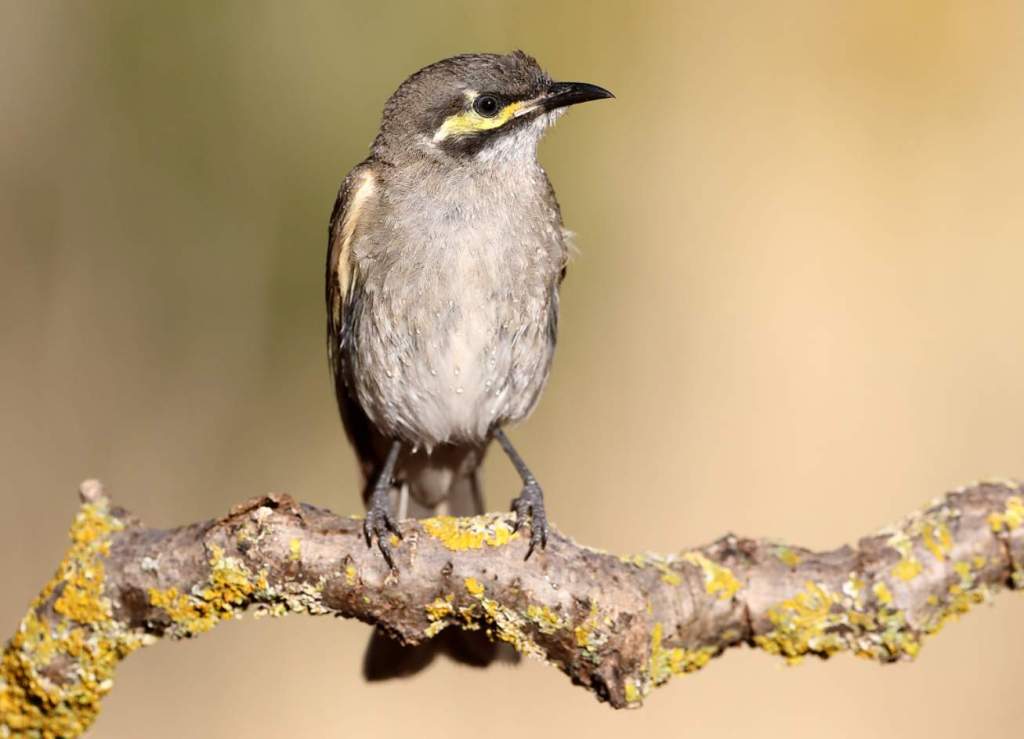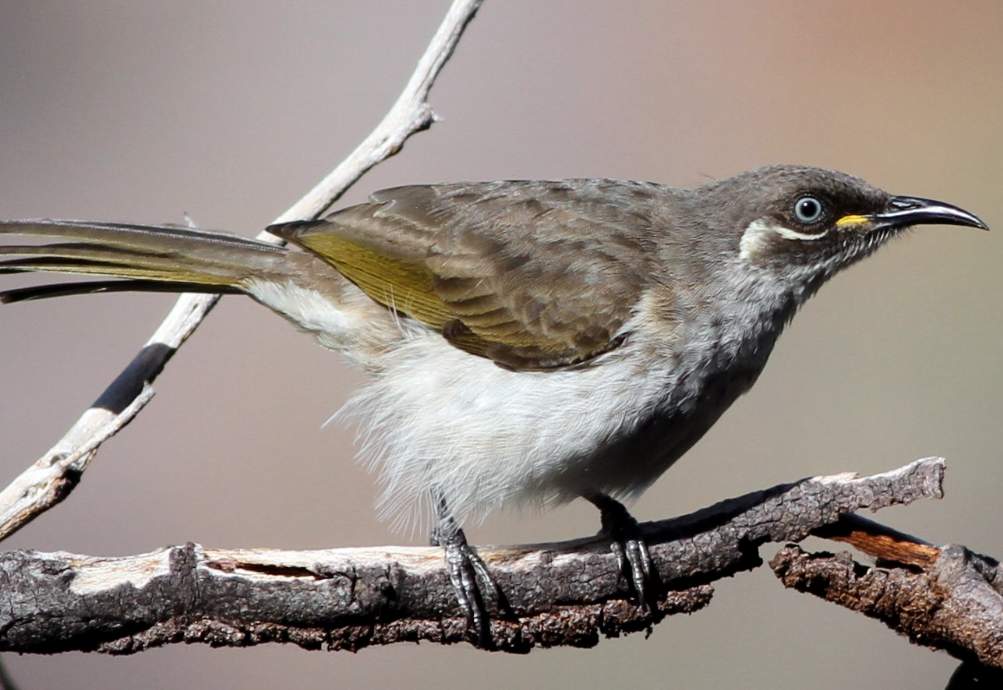Yellow-throated Honeyeater (Nesoptilotis flavicollis) is mainly restricted to Tasmania and Bass Strait Islands. The Yellow-throated Honeyeater occurs through a wider range of habitats there than any other honeyeater. Wet and dry sclerophyll forest, coastal heaths, alpine woodland, and even well-shrubbed gardens are occupied.
Similar to its close relative, the White-eared Honeyeater, it is rather solitary, only remaining in family groups temporarily after breeding in autumn and gathering on cider gum to feed on manna exuding from foliage. During the winter season, the coastal populations swell with birds-females and immature-from probably higher altitudes, most visiting the same feeding quarters each year.
Although the territorial male birds are sedentary, and hold much the same range year-round, advertising it with loud, machine-gun-like tonk-tonk-tonks sporadically from vantage perches through the day. They seem to mate temporarily with females, and then drive them and their young off, only to remote and nest again in the same season. Pairs make the nest alone.

Both partners are reported to build and incubate -though this needs confirmation-and both feed the young and defend the vicinity of the nest aggressively, flying at intruders and driving them off. Building birds often become bold and pull hair and fur from stock and household pets to line their nests. Also, like the White-eared Honeyeater, the Yellow-throated is a bark- and crevice-forager.
Indeed, its abundance in any area can be linked to the number of large eucalypts providing extensive foraging surfaces. The birds work over the cracks and crannies on trunks and branches, hopping and fluttering actively, gleaning out into foliage and down through shrubbery to the ground. Spiders and insects-beetles, flies, wasps, and caterpillars-are staple prey, and are augmented with scale insects, their sugary secretions, and manna from insect-damaged foliage.
The birds even hawk out for small moths and butterflies. The flight between trees is an erratic, twisting, undulating dash. Insects provide 80 percent of this honeyeater’s diet. Nectar and fruit are taken rarely, although young birds are sometimes attracted to eucalypt blossoms and fruit.
It is also known as Linnet, with a length of 195-210 mm. Sexes are similar; however male bird is a bit larger. The head, nape, and sides of the neck are rich gray, faintly flecked black on the crown. Thus, the rest of the upper parts, wings, and tail are citrine green. The lores and lower cheeks are black-gray to silver-grey upper cheeks and ear coverts with small yellow ear tuft.
Chin and throat are rich yellows, bordered are blackish gray, grading into paler grey breast and belly which is washed yellow in center; under-tail olive tipped yellow. The eyes are red along with the black bill and slate-grey feet. The immature bird as adults but duller; throat pale yellow; eye hazel.
The Yellow-throated Honeyeater advertising call is quite loud, resonant, machine-gun-like tonk, typically repeated 3 or 4 times. Other calls are whirring churrr ending with sharp chop note and loud pick-em-up very harsh churr in aggression.
In many local dialects, however, the song of Yellow-throated Honeyeater consists of a variety of soft warbling notes uttered at dawn or dusk, mainly during the breeding season. The breeding and nesting seasons are July-January. Nest a deep bark cup, interwoven with grasses; lined with fur, wool, and sometimes feathers; usually placed in a grass tussock, bracken bush, up to one or two meters above the ground.
The clutch contains two or three; pale buff-pink colors eggs, that are delicately spotted and flecked with red-brown and purple-gray, mostly at the larger end; oval shape approximately 24 x I7 mm. The incubation period is about I5-16 days. The juvenile bird fledges in about I4-15 days. Yellow-throated Honeyeater is a common bird in most habitats throughout Tasmania and Bass Strait islands, particularly shrubbed wet and dry sclerophyll forests.
Related Reading – Grey-headed Honeyeater Call







